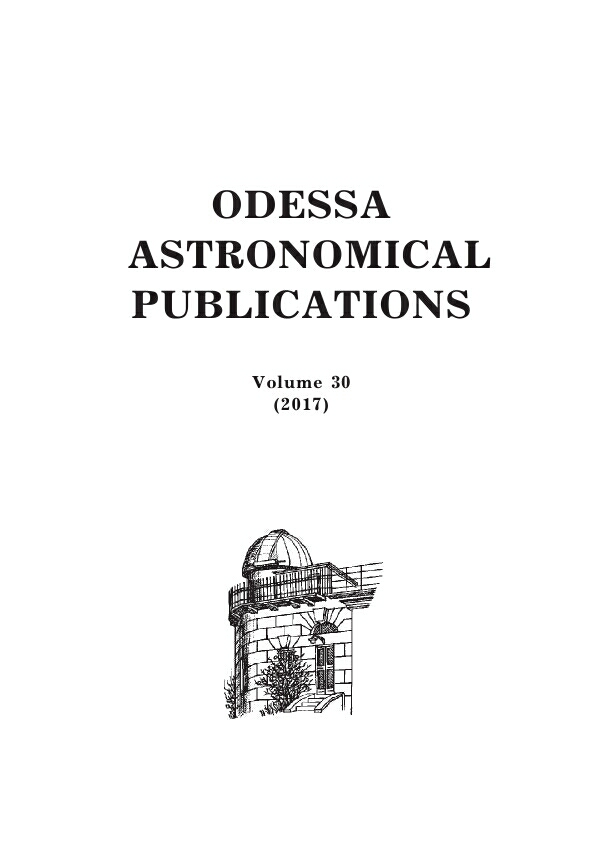LIMIT VALUES AS AN UNIVERSAL METHOD OF DESCRIPTION OF PHYSICAL REALITY
DOI:
https://doi.org/10.18524/1810-4215.2017.30.114127Ключові слова:
axiomatic approach, limit values, fundamental constantsАнотація
There are two main forms of cognition of Nature: empiric knowledge obtained from the experience, and theory as system of ideas and principles. Each of the two forms uses its own methods. While empirics or phenomenology is based on experiments, theory mostly deals with axiomatic approach. Every axiomatics starts from the principal question: what statements should be chosen as axioms? The present work uses the existence of limit values as the initial axiom. It is well known that the statement about the existence of minimum quantum of action ħ is sufficient to build all the Quantum Mechanics, likewise maxi-mum velocity value c—for the Special Relativity. Similar approach can be realized in General Relativity as well, which can be built on the postulated existence of limit (maximum) power = c5 / 4G
It seems natural in context of this axiomatics to transit from the traditional Planck’s units to the modified ones, i.e. from the set (ħ, c, G) to (ħ, c, ), with the latter containing exclusively limit values. The approach considered in the present paper opens new exciting possibilities for interpretation of the known results and obtaining the new ones.
Посилання
Bolotin Yu.L. et al.: 2016, preprint (arXiv:1604.01945).
Brandt H.E.: 1989, Foundations of Physics Letters, 2, 39.
Burderi L., Di Salvo T., Iaria R.: 2016, Phys. Rev., D93, 064017.
Caianiello E.: 1981, Lelt. Nuovo Gimento, 32, 65.
Gibbons G.W.: 2002, Found. Phys., 32, 1891.
Gorelik G.: 2009, preprint (arXiv:0910.3424).
Karolyhazy F.: 1966, Il Nuovo Cimento, A42, 390.
Lloyd S.:2005, preprint (arXiv:quant-ph/0501135).
Ng J., van Dam H.: 1994 Mod. Phys. Lett., A9, 335.
Ng J.: 2001, Phys. Rev. Lett., 86, 2946.
Ng J.: 2002, in Proc. of OCPA 2000, Editors: N.G.Chang et al. (World Scienti c Publishing Company), 235; available at arXiv:0010234.
Ng J.: 2003, Modern Physics Letters, A18, 1073.
Papini R.: 2003, Nuovo Gimento, B117, 1325.
Penrose G.: 1973, Ann. N. Y. Acad. Sci., 224, 125.
Planck M.: 1899, S.-B. Preu.Akad.Wiss., 5, 440.
Schiller C.: 2005, International Journal of Theoretical Physics, 44, 1629.
Schiller C.: 2006, Motion mountain, Relativity, 2, 103, Edition 27.06, available at www.motionmo-untain.net.
’t Hooft G.: 1994, Dimensional Reduction in Quantum Gravity, in Salamfestschrift, Editors: A. Ali, J. Ellis and S.Randjbar-Daemi (World Scientific Publishing Company) 284, available at arXiv:gr-qc/9310026.
Susskind L.: 1995, J. Math. Phys., 36, 6377.
Wheeler J.A.: 1986, American Scientist, 74, 366.
Wigner E.P., 1957, Rev. Mod. Phys., 29, 255.
Wood W.R., Papini G., Cai Y.Q.: 1989, Nuovo Gimento, B104, 727.
##submission.downloads##
Опубліковано
Як цитувати
Номер
Розділ
Ліцензія
Авторське право (c) 2017 Odessa Astronomical Publications

Ця робота ліцензується відповідно до Creative Commons Attribution-NonCommercial 4.0 International License.
Відповідно Закону України про авторське право і суміжні права N 3792-XII від 23 грудня 1993 року
